In this interview with main Skygoblin Theodor Waern, who is fresh off releasing the very first chapter of his four-part adventure game series, The Journey Down, we discuss the game’s unique look and feel, Waern’s inspiration for the game and find out more about the role Adventure Game Studio played in the game’s development. We also got around talking about the importance of polish, what makes a puzzle a good puzzle, and Waern’s workflow.
In addition to this interview, we have also simultaneously published our review of the first chapter of the game here at The Slowdown. “Over the Edge” can be downloaded from Skygoblin right now.
The Slowdown: Starting off, I would like you to return to the origins of the series for a minute: In the manual provided with “Over the Edge,” you reveal how the game’s origins actually lie in brainstorming sessions with your colleague, Mathias Johansson. How big a catalyst, though, was simply finding the correct tool to work with?
Theodor Waern: There’s no point denying that when me and AGS first laid eyes on each other, we both knew it was love. I realized right from the start that this was THE tool for me. The learning curve was perfect. I had a problem, I banged my head at it, I solved it. I had another problem, I banged my head some more, and I solved that one too. It has been that way ever since I started production on the game and I doubt I will ever come to a complete stop.
For a guy like me who knows what he wants, knows a little about basic scripting, and doesn’t mind the fact that making adventures actually is a bigger adventure than playing them, AGS truly is the perfect tool. We have had a rather stormy relationship though, me and AGS. But in the end my bugs have always been solved and we’ve made sweet, sweet adventure game love again.
l think the Journey Down might have had a chance without AGS though , the setting and characters just needed to get out of my brain. It would however most likely not have been a game. Maybe a graphical novel or just a large series of paintings or something. I’m incredibly glad it turned out as a game though. I have learned so much from the experience it’s just ridiculous.
The game’s storyline has seen quite a few revisions since 2005. When you finally hit on the current plot as we players will get to know it – what was it that made you go “This is it!”? Four chapters of storyline is no joke to commit to, after all.
Honestly, I think what made me finally lay down the script and say “this is the way it’s going to be.” was the fact that I felt I just kept pushing things around and never actually got around to finalizing the first chapter. Let’s face it. Four chapters, as you mentioned is a HUGE effort. I certainly hope I will release all four of them but who knows?
Now at least I can be certain part one got released. I would however not have released, had I not finally landed in a version of the plot that I felt comfortable with. Simplification was the key here. Strangely I found that the more twists and important characters I removed from the plot the better it became.
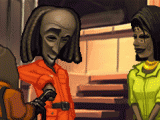
A major part of development for you indeed seems to be polish – especially in terms of pacing and balance. We already know, from your deleted scenes thread, how you ultimately decided to scrap a considerable portion of material from the game. On the one hand, how hard is it to leave materials behind, and on the other hand, how important do you consider it for a designer to be able to swing the axe?
Making games is all about swinging axes. I work with online games for a living, mostly making content. I know for a fact that when we develop new features, try unproven techniques and new ideas, 80% of what we create is thrown in the trash. Not because it wasn’t good, but because it was for one reason or another, just mixing up the experience and blocking the parts that really mattered. I am convinced that throwing away stuff that confuses the player is incredibly important, and learning to do this is a must if you want to deliver a game with good flow and pacing.
To my surprise, you had stated before that “Most characters in the Journey Down are based on African masks of one sort or other”; while playing the game, I was almost certain you were utilizing Maori Tiki and/or Polynesian Moai as the foundation for the game. So, my question is this – you’ve actually not utilized a specific culture or mythology, instead going for a more eclectic mix of influences?
Kito is based on a east African style called Makonde, while Bwana, Lina and the main bad dude are all based a central African style of carving called Chokwe. Most of the other characters are actually just a big mess of different ideas and influences. There are definitely some Tiki and Moai influences in there somewhere! I have a couple of African art books that I like to skim through a couple of minutes before I go to bed now and then.
I haven’t copied any masks from them but I’m certain they have influenced me greatly. When it comes to designing characters for such a low res game though you really need to cut a lot of corners and remove a lot of the fine details, this changes everything a lot, so in short, let’s just say it’s a big mess.
What about the names – like Bwana, Kaonandodo – are these broadly African too?
Most names were just randomly given to the characters without any research whatsoever. There are however some exceptions. One of the two goons name’s is “Bunga” (not sure if this is mentioned in chapter one) his name, Bwana’s and Matoke’s are all Swahili words (Tanzania, Kenya). There are probably more of them in there somewhere I just forgot they have a meaning heh. So to actually answer your question: Correct, it’s a mess of different styles/mythologies/cultures.
While many players have already pointed out various parallels to Full Throttle and Grim Fandango – the first being thematic, the other stylistic – I strongly felt the episode also carried a Monkey Island feel to it. Apart from Kingsport, there are seven bays that surround St. Armando; will this maritime aspect return in the forthcoming chapters?
Yep. For some reason the maritime theme and adventure games go well together, no point fixin’ that which ain’t broken eh?
Aye aye! What probably reminds people most of Full Throttle, then, is probably your skilful combination of 3D CGI with 2D animation. How early in development did you make the decision to complement 2D with pre-rendered 3D?
It is fun that people have spotted the similarities with Full Throttle visually. This was my number one source of inspiration when it came to mixing 2D and 3D. I have looked at those cutscenes many a time and wondered why on earth they looked so damned good.
I think the first 3D item that appeared in Over the Edge was the crane. I knew what I wanted the puzzle to be like and I realized I would never have the patience to draw the crane in all of its angles so I made a simple non-lit 3d scene and without any real effort it melded nearly seamlessly with the 2d art. That’s when I realized I could stick 3D in there and get away with it. After that I just kept going with the car in the intro and the airplane. I even had a quick go with Bwana as a 3D model but I gave that up fast. Character rigging and animation is a whole other science in itself and I would have no chance making that look as good as I wanted it.
Over the Edge’s puzzles gelled and rolled like no other adventure game in my recent memory. Is there a specific game or series that would exemplify the tradition and style of puzzles that you’re aiming for?
Adventure gamers in general won’t agree with me here, but my personal opinion is that a good puzzle is an easy puzzle. They make things flow and since they are easy they are more common and hence give the player feedback more often. It keeps people engaged and interested when things are happening. The only downside with an easy puzzle is that you need many of them to compensate for how fast you solve them.
What makes a puzzle a good one to you, then?
Admittedly a good difficult puzzle can be a lot of fun if it is well written and perfectly balanced, this however is seldom the case. I think the mood in an adventure game is totally ruined by “rub all items on all items” brute force puzzle solving. It flattens the whole experience. So do walkthroughs. If the player resorts to either of these, it is my opinion that the game has failed in keeping the player within the game world and has let them wake up from the experience that is the game. That is obviously a bad thing.
However, all games no matter how well written are full of moments when one resorts to brute force though, I’m sure people playing “Over the Edge” have done so as well.
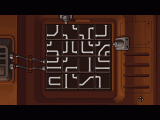
One thing that does set your game apart from many other AGS-built adventures is your use of the 1995 “big” sprite style that is principally more about lines, shapes and forms and less about individual pixels – something that I’m sure is not lost on players. Did it take you long to discover a suitable workflow for doing art and animations in the very modest resolution of 320x and, more importantly, as a developer, what do you like best about the miniature work space?
The small workspace is great for efficiency. I love having those kinds of limitations. The more limitations you got the faster a project can be finished. On the character side however, I honestly think work might have gone faster if I had higher res and better alpha, as I would have less of a headache battling sharp pixel edges, so I’m not quite happy with the workflow I ended up with on them. Had I aimed for a more of a “pixel art” style, low res would be a blessing, now though… it mostly slowed things down. The best part with going low res is definitely how much faster work goes on cut scenes and backdrops, and the lovely retro vibe you get from the low res certainly adds to the mood as well. The low file size of low res games are nice as well.
I’d like to know a bit more about the background music. Beyond D’souza’s bubbly contemporary reggae stylings, what really stands out to me is how there seems to be a specific theme for every location, no matter how quickly they may be traversed by the player. It would be very interesting to hear about the way you two come up with a suitable tone and style for each scene.
Once I had explained the overall mood I was after, the reggae mixed with the jazz, Souza just went balls out crazy and started churning out tunes like mad to the different environments. We had a very simple workflow there where I made some short notes on what I wanted focus to be on, he made a first test, sent it to me, I give him some simple response (usually regarding what tempo things were in), he made the fixes, and we stuck it in game. He has been great at handling my feedback and implementing it immediately, just amazing.
The cut scenes were a lot more work though. I had to film the movies and send them to him so he could synch the music 100%. Also, the music in the cutscenes is split up in lots and lots of small bits, so the music wont break if people start skipping dialogue etc. I’m very proud of how well we made that work. Next time though I’ll most likely disable clicks during cutscenes, the result was good, but I’m not sure it was worth the effort.
The swift-but-sweet sax interludes, then, how did those come about?
That is a pretty interesting story actually. These sax samples were the first I added. Why? Back then I didn’t have any music, and I desperately wanted some. I headed to freesound.org and started hunting for jazzy little tunes to go with my slapstick animations to give them some punch. Just something temporary. When I thought I was starting to wrap the rest of the game up I figured it was the right thing to do to send an email to the author and ask if it was ok that I used his samples for a game. Amazingly enough he answered: Sure. Do you need anything else? My simple response to this was: I need an entire soundtrack. He charged into the project head on with no sign of hesitation whatsoever and has produced things like crazy for me since. I owe him a lot.
Finally – and this is something that is very often brought up with AGS titles with great production values – what’s your take on voice acting and indie adventure games? I personally kept on reading Bwana’s lines aloud along the way, mon!
Heheh, me too, mon. I love it when games have good voice acting, it adds so much depth it’s just mad. There are actually lots of good freeware games out there with quality voice acting. Where they get the talented people from, I have no idea. I would love a voice over version of “Over the Edge” but I really don’t have a clue how to pull that off. It’s a BIG project, and honestly voice acting needs to be good, simply “ok” voice acting sinks a game in my opinion.
Hopefully, some time in the future, a voice acting solution will come my way. I too would love to hear Bwana’s nice relaxed attitude pour out of my speakers. One day this might come true!
Thanks again to Theodor Waern for his time and answers. While chapter two of The Journey Down, called “Into the Mist,” is slated for a summer 2011 release, “Over the Edge” is available right now at Skygoblin.com. Finally, if you didn’t yet get your full share of information on the game, our review can be read here, and there exists a production thread with big versions of some of the paintings for the game, and another post contains sketches and deleted scenes from Waern.
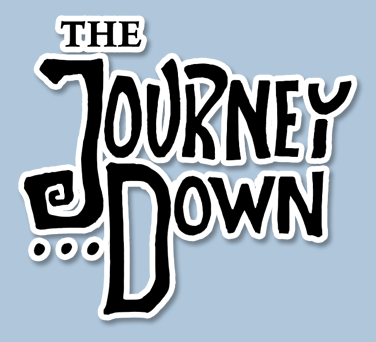
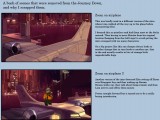
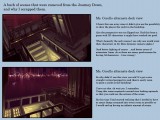
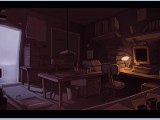
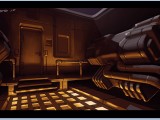
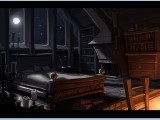
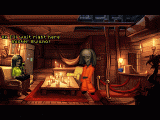

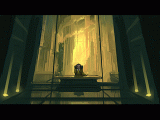
Theo is best, see you in nord! // Robinzz